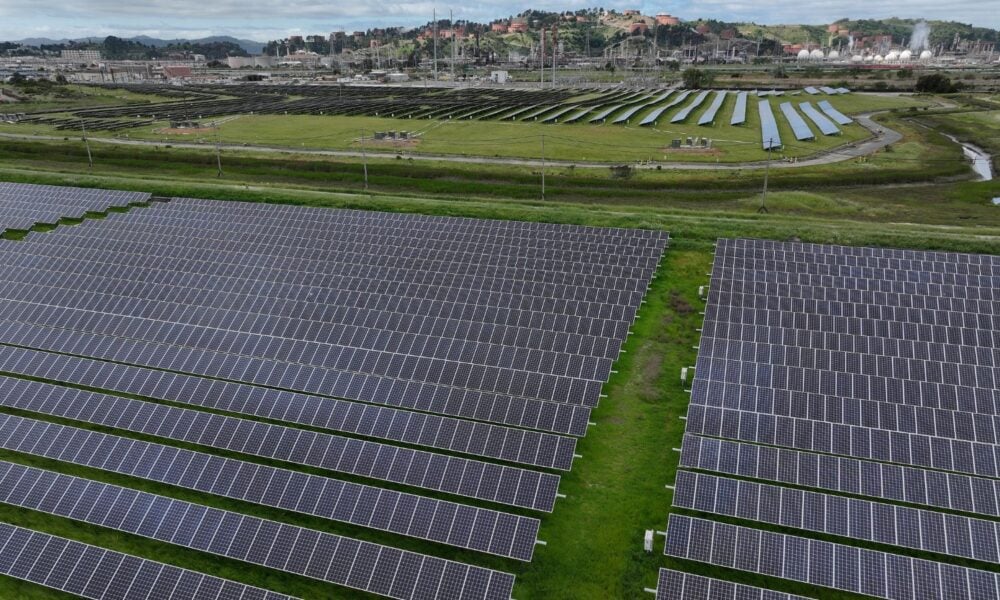This is part 3 of 3 posts on the roadblocks and bottlenecks California is facing in its transition to 100% clean energy. Read Part 1 about transmission needs and Part 2 about the interconnection backlog.
In my previous posts, I wrote about California’s need to increase its transmission capacity and reform the grid’s interconnection process for the clean energy transition. In this post, I’ll dive into the permitting challenges of clean energy infrastructure.
To briefly set the stage again, California’s grid now generates 28% of its electricity from solar and wind resources, up from just 14% in 2015. It’s a big step, but the pace of getting these resources on the grid still needs to be faster. With current electricity generation capacity at about 88 gigawatts (GW), California needs to add between 7 and 8 GW annually over the next 20 years to reach its clean energy goals. In the past four years, California has added an average of under 4 GW per year.
Long permitting times are slowing down clean energy progress
There are various levels of federal, state, and local permits needed to develop clean energy infrastructure, depending on where the project is being built. When a project needs to acquire multiple permits, a lead agency is assigned and coordinates with other agencies for input. The project may trigger federal permitting needs if it crosses federal land or Indigenous land, uses federal funds, potentially impacts water and air quality, or potentially affects protected environments, such as those of endangered species. The National Environmental Policy Act (NEPA) is the environmental review process that is required for federal permits.
In addition to federal permits, California has state-specific permits. Notably, the California Environmental Quality Act (CEQA) is the state environmental review process for all projects that result in physical changes to the environment. The review considers impacts on air, water, and noise quality, as well as the impacts on biological, agricultural, cultural, and mineral resources. It is often considered very similar to—although slightly broader and more rigorous than—NEPA.
Projects may also require permits from other state agencies, depending on where the project is being built. For example, California transmission projects will need a permit from the California State Lands Commission to cross state lands, or from the California Department of Transportation to cross state highway rights-of-way.
Finally, local permits are issued by city or county governments based on local zoning and permitting ordinances, adding another layer of permitting processes to clean energy projects.
Long permitting times are notably contributing to delays in getting clean energy infrastructure developed. But the reasons why approvals might take so long vary given the project and the different types of permits needed.
For example, transmission permitting often takes exceedingly long as permits must be attained from multiple jurisdictions and agencies. The California’s Certificate of Public Convenience and Necessity (CPCN) permit, which is needed for all transmission projects, takes on average 19 months to be approved by the California Public Utilities Commission, significantly longer than other states in the West.
Clean energy projects may often trigger multiple levels of permitting, which can lead to coordination delays that increase permit review times. Additionally, a growing number of local governments are issuing bans on and other barriers to clean energy infrastructure, making it more difficult for permit approval. A recent analysis shows that 15% of counties and cities nationwide have placed bans or made clean energy projects hard to permit, including in California. While this is partly a NIMBY sentiment, land for clean energy also competes with other uses including agriculture, conservation, and various community needs. California is still working to find the balance between these land uses, but a state poll and a nationwide poll show that most people are comfortable living by clean energy projects, particularly solar.
Long permitting times are considered a barrier to clean energy development—which is true to an extent. But there are clean energy projects that shouldn’t be approved because of harmful environmental and community impacts, and robust permitting procedures are important for determining when this is the case. It may take time for proper environmental reviews and community engagement, but that shouldn’t be discouraged in the permitting process. When trying to reduce permitting timelines, the interventions should address administrative and coordination hurdles in permitting, while continuing to allow for strong environmental reviews and partnerships with affected communities.
What is California doing about these permitting problems?
Passed in 2022, Assembly Bill 205 included an opt-in permitting process for certain clean energy projects through the California Energy Commission (CEC) that enforces faster timelines for processing permits. This pathway gives the CEC authority to issue state and local permits, thus bypassing other state agencies and local jurisdictions. There are conditions for this alternative track to ensure local engagement, including economic arrangements with the local government, workforce requirements, and community benefits agreements. Four projects are now under review in this opt-in permitting process and its impact remains to be seen. In a bestcase scenario, a single agency issuing permits could reduce timelines by decreasing administrative hurdles and coordination lags. As the process unfolds though, the CEC will have to ensure that any reduced permitting timelines are not at the expense of environmental and community protections.
On the federal side, the Bureau of Land Management, which manages 15% of land in California, is updating its Western Solar Plan. This is a landscape approach to identifying public land that has high resource potential, fewer conflicts with other land uses, and is close to transmission lines. Areas identified under landscape-level planning tend to have more streamlined permitting through clear siting criteria, predictable environmental impact mitigation requirements, and already available data for the environmental review process to help streamline permitting. For developers, this provides much more certainty in obtaining permits.
The Desert Renewable Energy Conservation Plan (DRECP) for the Mojave and Colorado/Sonoran desert in California is a good example of landscape-level planning that improves alignment between conservation and clean energy goals on public lands to allow for streamlined permitting processes. However, as these programs for clean energy on public lands spur more clean energy development, it will be important for continued monitoring of environmental impacts, especially around the risk of cumulative impacts and the effects of worsening climate impacts.
What California could do next
Permitting processes are critical for ensuring new infrastructure is in line with environmental and public health standards. While environmental reviews are increasingly an area that have come under attack, cutting or rushing these reviews will inevitably lead to longer-term harms to the environment and environmental justice communities.
California could improve the permitting process by requiring early local community engagement. By partnering with communities early in a project’s development, stakeholders can reduce litigation and other opposition efforts later in the process. Environmental and community liaisons should be a part of all major transmission projects to facilitate early input into transmission plans. Additionally, the state should provide funds and technical assistance to Tribes and local community groups to build capacity for engaging on clean energy infrastructure siting concerns. Measures such as “community benefits agreements,” particularly in disadvantaged communities, can help ensure that the benefits of clean energy support local communities, while achieving developer and state goals. As local governments throw up barriers to clean energy, it’s even more important to get communities on board early on.
The state should also increase staff capacity for agencies to conduct reviews. Environmental reviews and proper stakeholder engagement take time to be done accurately. The sustained wave of clean energy projects signals the importance of workforce development to ensure that agencies have the staff capacity, knowledge, and experience to perform reviews in a timely manner. The state needs to plan for long-term funding to build such workforce capacity and retention.
There is also room for improvement in agency coordination. Permitting often involves multiple agencies at federal, state, and local levels, creating potential for coordination difficulties or duplicative efforts. The CEC’s opt-in permitting process may alleviate some of these issues with its more streamlined approach. Stronger guidance and processes and inter-agency coordination can also help reduce administrative delays. In areas where California knows significant clean energy projects will come online, state and local agencies could consider more collaborative approaches to community engagement and environmental reviews to build stronger siting criteria and databases that can help streamline permits.
Lastly, the state could consider more land conversion and multi-purpose land use strategies that minimize permitting needs. This includes clean energy solutions that leverage the built environment, have multi-purpose land use, or are on already disturbed lands, such as former industrial sites or barren lands.
In the built environment, for example, California legislation directs agencies to assess opportunities for clean energy infrastructure along highways, but additional opportunities exist for converting parking lots, warehouses, and industrial-scale, irrigated agriculture. These efforts could reduce environmental impacts and siting conflicts with local communities, thus helping speed up permitting reviews. Similarly, innovation in clean energy project designs is creating opportunities to reduce conflict with other land uses, such as solar panels over canals and solar panels over crops (agrivoltaics). These solutions can reduce local opposition to clean energy by working with communities to find mutually beneficial solutions. For example, agrivoltaic systems help communities maintain their farming culture while drawing additional benefits from clean energy and diversified income.
California could also take notes from other states. Maine and Georgia have already used highway rights-of-ways for clean energy projects that can streamline permitting and have the additional benefit of state revenue. Colorado is significantly ahead in research and deployment of agrivoltaics. New York implemented a “build-ready” program to pre-approve permits on existing or abandoned commercial sites, brownfields, landfills, and former industrial sites, which developers then bid on. These solutions are all unique in their ways to reduce permitting timelines, and don’t undermine environmental reviews and communities’ needs.
The roadblocks to clean energy in California must be cleared fast
The urgent need to bring more clean energy resources online has created growing pains for the outdated power grid. It won’t be an easy task, but addressing permitting challenges will be critical for California to achieve its clean energy goals. Moving forward, California must put in the effort and resources to work through the barriers in the clean energy development process. Legislators and regulators can fund and incentivize the necessary reforms to systematically get clean energy projects online faster. If California can work through these issues, it will once again show the state’s leadership and commitment to the clean energy future.
This is part 3 of 3 posts on the roadblocks and bottlenecks California is facing in its transition to 100% clean energy. Read Part 1 about transmission needs and Part 2 about the interconnection backlog.

